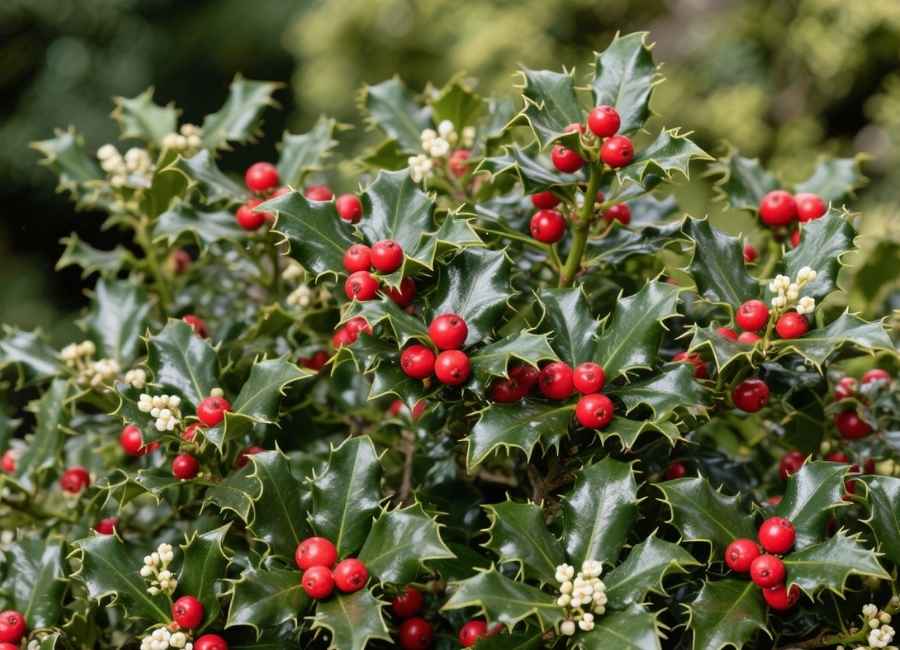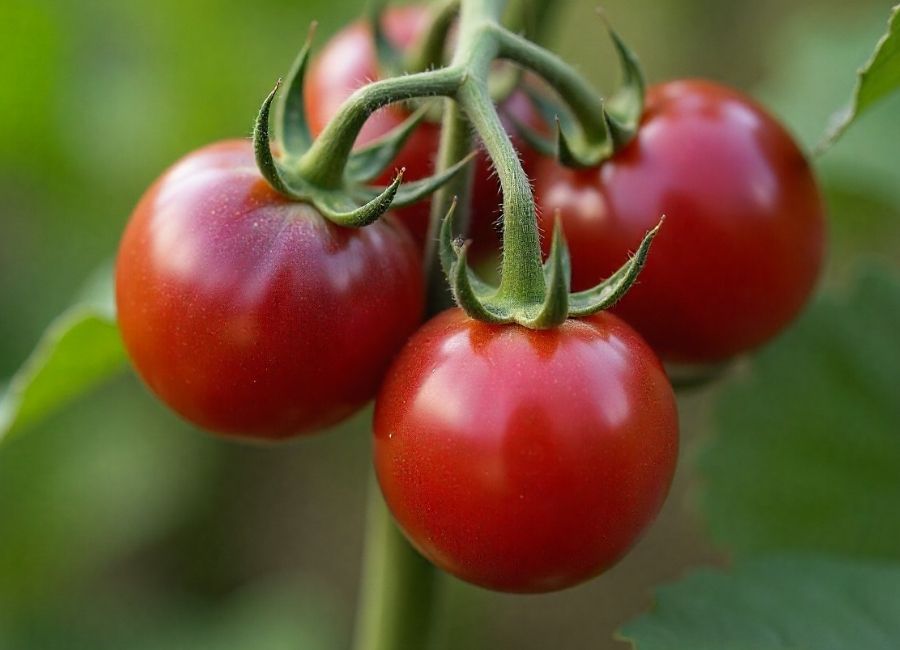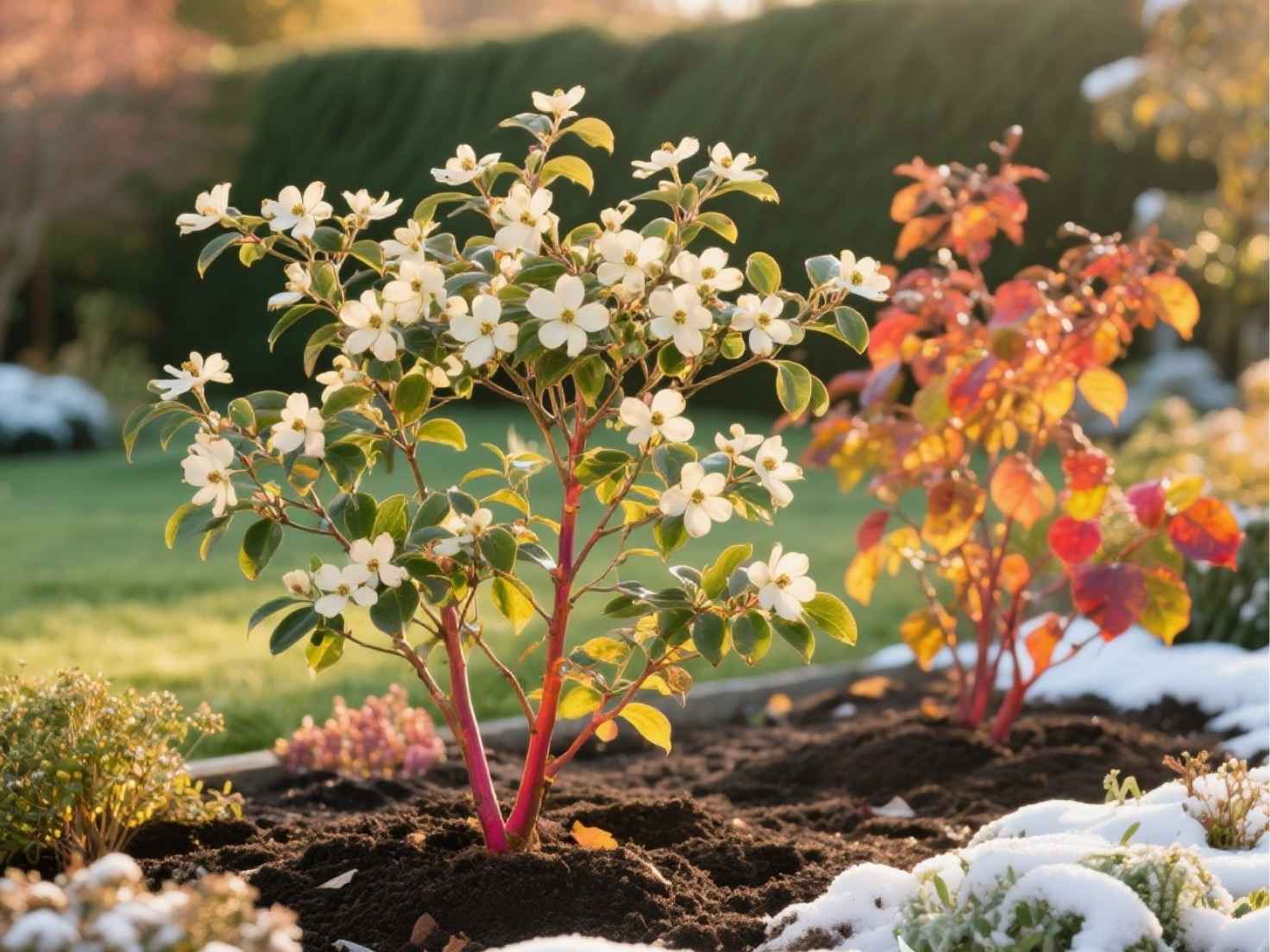Holly plants, with their shiny leaves and bright red berries, are well known for their festive look. But they also add color and structure to gardens all year. No matter the size of your space, you can find a holly variety that fits.
Holly, also called Ilex, includes over 400 species of trees and shrubs found around the world. (Holly – Wikipedia, n.d.) Its bright berries stand out in winter, and its leaves and flowers add interest in every season. Holly can have evergreen or deciduous leaves in different shapes and colors, and small white flowers appear in spring or summer. The berries that follow are an important food for songbirds and other wildlife. (Holly trees provide food, shelter for wildlife, n.d.)
This guide covers all the basics of growing and caring for holly. You’ll find tips on planting, choosing the right variety, and using holly to improve your garden.
How to Plant and Care for Holly
Holly is easy to grow if you give it the right conditions. It usually needs little care and is not bothered by most pests or diseases.
Planting Instructions
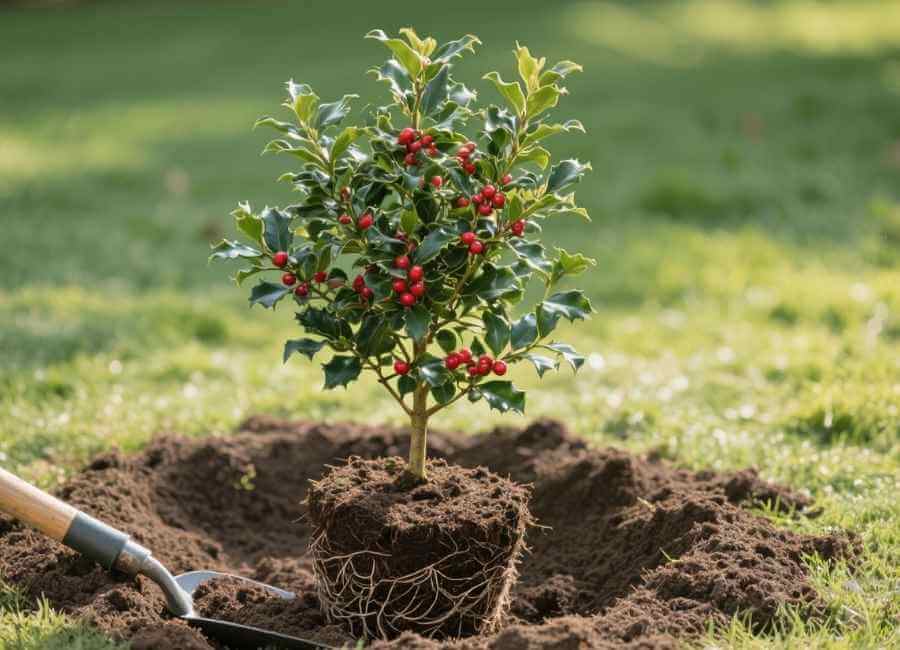
When you’re ready to plant, choose a location that receives full sun to partial shade and has well-draining soil. Spacing will depend on the specific variety, so check the plant tag for recommendations, which can range from 2 to 15 feet apart.
- Start by loosening the soil in the designated planting area.
- Dig a hole that is twice as wide and slightly deeper than the plant’s root ball.
- Take the holly out of its nursery pot. If the roots are packed tightly, gently loosen them before planting.
- Set the plant in the hole so the top of the root ball is even with or just above the soil around it.
- Fill the hole with soil and press it down gently to remove air pockets.
- Water the plant thoroughly after planting and continue to water regularly until it becomes established.
Soil, Water, and Fertilizer

Holly thrives in rich, slightly acidic, and well-draining soil. (Holly Bushes: Planting, Growing, and Pruning Hollies, 2024) If you’re planting in a container, use a high-quality, all-purpose potting mix and select a pot with adequate drainage holes to prevent waterlogging.
These plants prefer moderate watering. The goal is to keep the soil consistently moist, but not overly wet or soggy. Allowing the soil to dry out completely can stress the plant, while overwatering can lead to root rot.
Fertilize holly in spring and fall to help it grow well. (Bayne & G.K., 2022) Use a slow-release fertilizer made for acid-loving trees and shrubs.
Pruning and Maintenance
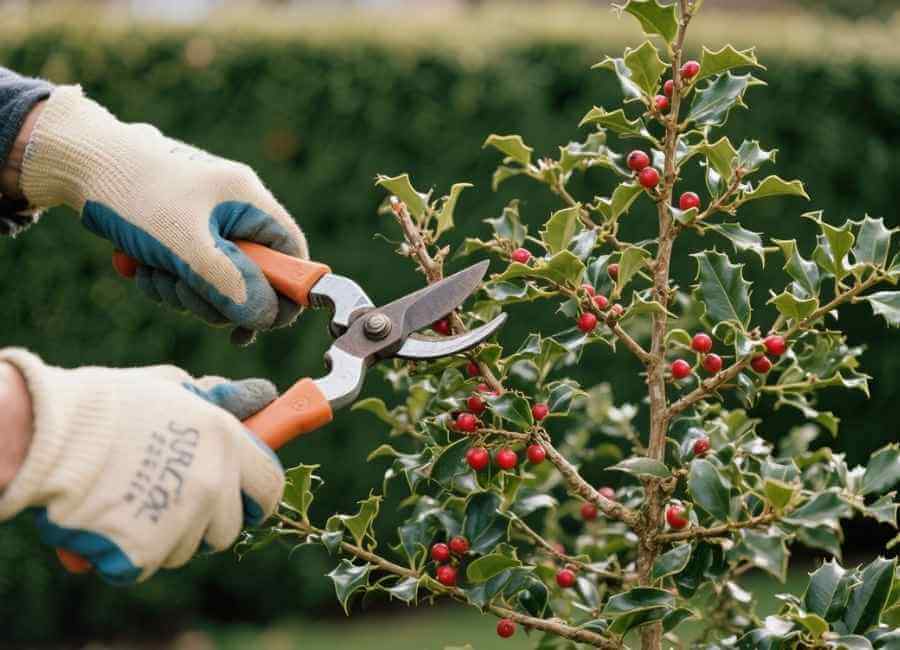
Pruning needs vary among different types of holly. Most varieties look best when allowed to grow into their natural shape with minimal trimming. The primary goal of pruning should be to remove any dead, diseased, broken, or crossing branches. Light shaping can be done as needed.
Prune holly in late winter or early spring before new growth starts. Some types, like Japanese holly, can handle more pruning and work well for hedges or topiaries. (Japanese Holly – Ilex crenata, n.d.)
Popular Holly Varieties
With so many types of holly available, it’s easy to find one that fits your garden’s style and size. Here are a few popular options:
- English Holly (Ilex aquifolium): The classic Christmas holly, known for its spiny, dark green leaves and bright red berries.
- Winterberry Holly (Ilex verticillata): A deciduous variety that loses its leaves in the fall, creating a stunning display of berry-covered branches.
- Japanese Holly (Ilex crenata): Often used as a boxwood alternative, this evergreen shrub features small, spineless leaves and a dense, compact growth habit.
- Blue Holly (Ilex x meserveae): This hybrid features glossy, blue-green foliage and produces an abundance of red berries.
- American Holly (Ilex opaca): Native to the United States, this tree can grow to a considerable size and is recognized for its dull green leaves and bright red berries.
- Inkberry (Ilex glabra): Another native species, this evergreen shrub has spineless leaves and produces small, black berries.
Ideas for Your Landscape

Holly is a flexible plant that works well in many garden designs. Here are some ways to use it in your yard:
- Foundation Plantings: Use smaller holly varieties to create year-round curb appeal around your home’s foundation.
- Hedges and Privacy Screens: Plant taller, upright evergreen types in a row to create a natural privacy screen along a property line.
- Containers: Place a small holly in a sturdy, decorative pot near your door for a festive look. Add holiday lights for extra cheer.
- Mixed Borders: Add holly to mixed borders to provide structure and winter color among perennials and other shrubs.
- Wildlife Garden: Plant holly with other berry plants like beautyberry and serviceberry to attract birds and wildlife.
Frequently Asked Questions
Why doesn’t my holly have berries?
Nearly all holly varieties are dioecious, meaning there are separate male and female plants. Only female plants produce berries, but they require a male plant nearby for pollination. (Why doesn’t my holly tree produce berries?, 2025) If your holly isn’t producing berries, you may have a male plant, or there might not be a suitable pollinator in the vicinity.
Are holly berries poisonous?
Yes, holly berries are mildly to moderately toxic to people and pets if eaten. They have saponins, which can upset the stomach. (Holly, n.d.) The berries look nice but should not be eaten.
Do holly bushes stay green all year?
Most holly types, like English, Japanese, and American holly, are evergreen and keep their leaves all year. Some, like winterberry, are deciduous and lose their leaves in fall. (Ilex aquifolium, n.d.)
How fast do holly shrubs grow?
Holly bushes grow slowly to moderately, usually adding 6 to 24 inches each year, depending on the type and conditions. (How Fast Do Holly Bushes Grow? Plus Holly Care Tips, n.d.)
Bring Timeless Beauty to Your Garden
Holly is more than a holiday plant. It adds color, texture, and structure to gardens all year. With the right variety and care, you can enjoy its beauty for years. Whether you want a hedge, to attract wildlife, or add winter color, there’s a holly for you.







